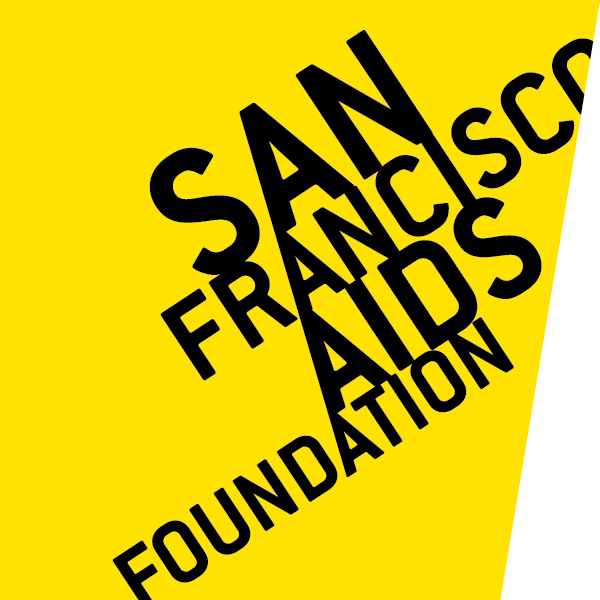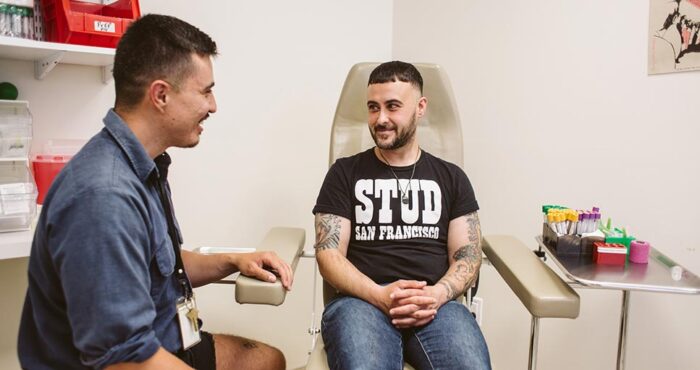One man’s experience with gene therapy

In 2015, Andrew Caldwell heard about an HIV cure study that would involve his stem cells being harvested, genetically modified and then transfused back into his body. The study was investigating whether these genetically modified stem cells would start producing HIV-resistant T-cells that could control and suppress the virus—without the need for HIV medications.
If the treatment worked, it would mean that Caldwell would be functionally cured of HIV.
Caldwell remembers that the details of the study “sounded really intimidating” at first. In addition to a months-long screening period (that ended up taking Caldwell a full year to get through), Caldwell would also need to undergo numerous hospital stays, invasive testing, chemotherapy, and then would receive a treatment of unknown efficacy.
Caldwell eventually decided to participate in the study, after slowly completing the initial screening requirements. In the fall of 2017, the researchers collected stem cells through a process called apheresis, which took 15 hours over two days to complete. They genetically modified the stem cells, and froze them in preparation for the transfusion.
In the spring of 2018, Caldwell went back to the hospital for more testing, a bone marrow biopsy, a round of chemotherapy, and the stem cell transfusion. For five weeks, Caldwell was cared for by his mother in the apartment they shared on the hospital’s campus.
The chemotherapy also caused Caldwell to lose his hair (and more startlingly, his beard). He lost 15 pounds, but said it was easy to regain the weight after returning to his daily life in San Francisco. Now, he’s back at work and focusing on building his strength so that he can participate in AIDS/LifeCycle, a 545-mile fundraising cycling event from San Francisco to L.A., produced by and benefiting San Francisco AIDS Foundation and the HIV-related services of the Los Angeles LGBT Center.
“I remember the study investigator explaining that this is the kind of study for someone who ‘wants to have some skin in the game,’” said Caldwell. “For me, being part of this study has allowed me to be more open about my HIV status, and to accept myself as an HIV-positive man. It’s been a conversation starter and has allowed me to talk about HIV with people I might not ordinarily disclose to.”

In preparation for the study, Caldwell realized that he would need to disclose his status to his parents, who did not know that he had been diagnosed in 2013.
“I didn’t want to disclose my status until I was comfortable with it. I wanted to have time on my side—to be able to say to them, ‘by the way, this is something that happened a couple of years ago, but I am fine.’”
He ended up talking to his parents when he was at home visiting for Thanksgiving. There were tears, and a lot of discussion about what it means to live with HIV in the current day. When Caldwell explained the study, and that he would need one of them to be his caregiver during his treatments, they were understanding and supportive.
“There was never a point when I had to convince them,” he said. “They were nothing but supportive, and it was just a matter of how and when.”
Before the five-week hospital stay, Caldwell also decided to discuss the study with his colleagues at work.
“I like all of them a lot, and I think it would have felt really weird to disappear for five weeks without telling them what was going on in my life. So when I told them about the study, by default I disclosed my HIV status. People were impacted more than I thought they would be. I made myself vulnerable, but honestly, I’m at a point in my life where if you’re going to be offended by that, or if you think it’s inappropriate for me to disclose, you’re not someone I necessarily want to have in my life.”
Caldwell said that his decision to participate in the study was also influenced by the privilege he feels as a person living with HIV in San Francisco.
“It’s much easier now for some people to live with HIV if they have good access to medications. As a gay, white male living in San Francisco, who works in tech, I am—knock on wood—never going to have an issue accessing medications or getting HIV treatments. But I know that is absolutely not the case for everyone. And that is one reason I wanted to do this.”
Now, Caldwell is in a holding pattern until his CD4 count rises above a certain level. Once it does (and it is not guaranteed to ever reach that level), the next phase of the study involves interrupting HIV treatment to see how Caldwell’s immune system reacts.
“I hope my participation in this study ends up being valuable,” he said. “But that’s a risk with research studies—you never know if the treatment will work. The researchers may learn something, but it may not be what they hoped.”
—










